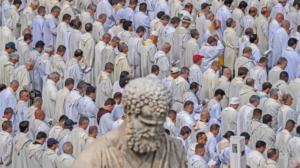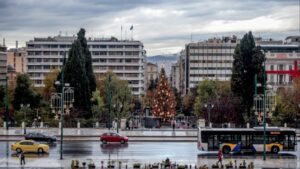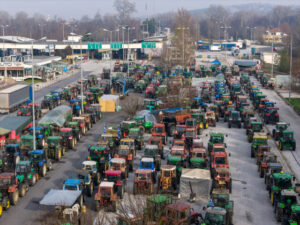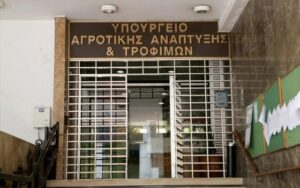Recently, a significant scandal involving the Catholic Church in Greece has emerged, revealing a money laundering operation that has been ongoing for eight years, with an estimated total of around 3 million euros involved.
The operation came to light after authorities noted substantial financial transactions from the church’s funds to nightclubs in the Peloponnese.
The investigation, led by the Anti-Money Laundering Authority under the direction of Charalambos Vourliotis, a former deputy prosecutor of the Supreme Court, found that two high-ranking Catholic clerics were transferring large sums of money to nightclub owners in the region, presenting these transactions as investments.
The most recent transaction was recorded just days ago, amounting to 50,000 euros. One of the nightclub owners involved had a prior criminal history related to the church, although it was not Catholic.
The Vatican has been informed of the case, and in response to the revelations, the Holy Synod of the Catholic Hierarchy of Greece issued a statement saying they had no official information about the matter and were only made aware through the media. They expressed their expectation to receive official updates from the relevant authorities to make an official statement on the issue.
The investigation revealed that this scheme had been operating for eight years, with significant amounts being funneled out of the church’s coffers, controlled by the two clerics, and directed toward specific entrepreneurs. The authorities had been alerted to these suspicious transactions by banks, which prompted a thorough investigation. Evidence of serious crimes such as embezzlement and money laundering emerged, leading to the identification of the two priests and their connections to nightclub business owners.
A report has been forwarded to the prosecutorial authorities concerning the criminal investigation into the priests for embezzlement and for the business owners regarding money laundering.
In terms of governance, the highest administrative body of the Catholic Church in Greece is the Holy Synod of the Catholic Hierarchy of Greece, which meets biannually. There is no permanent primate; the president is elected every three years. Additionally, under Catholic Canon Law, bishops do not serve for life but resign at the age of 75.
Greek Regions with Catholic Communities
The Archdiocese of Athens is the largest Catholic region in Greece, boasting approximately 30,000 faithful. Its center is the Cathedral of St. Dionysius the Areopagite, located on Panepistimiou Street. Since 1973, the Archbishop of the Catholics in Athens has been His Eminence Theodore Kontidis.
The Archdiocese of Rhodes currently has very few faithful and is largely inactive; the Archbishop of Athens also acts as the Apostolic Administrator in this region.
The Diocese of Chios encompasses the islands of Chios, Lesbos, Samos, and the rest of the islands in the Eastern Aegean. It has virtually no Greek congregation left and is under the care of the Metropolitan of Naxos and Tinos, yet remains an autonomous diocese.
This diocese includes the islands of Naxos, Paros, Antiparos, Amorgos, Tinos, Mykonos, Andros, and Delos, with an estimated 3,000 faithful, most of whom are concentrated in Tinos. The current Metropolitan of Naxos and Tinos is His Eminence Joseph Printezis, and the Metropolis is based in Tinos, centered around the Cathedral of Our Lady of the Rosary in the village of Xinaras.
The Diocese of Syros includes about 8,000 members and oversees the islands of Syros, Ios, and Milos. Since three-quarters of the Catholic clergy and monks in Greece hail from Syros, the island is recognized as the most significant center of Greek Catholicism. Since 2014, His Eminence Peter Stephanou has served as the Bishop.
The Diocese of Thira has around 150 members. The decline of the Catholic population began with the island’s subjugation to the Turks and continued with the emigration of many prominent members abroad. Today, the diocese, which is officially recognized by the state, is under the administration of the Bishop of Syros but remains independent.
Catholic Communities in Greece
The Diocese of Thira includes the islands of Thira, Thirasia, Ios, Anafi, Folegandros, and Sikinos.
The Diocese of Crete currently has nearly 1,000 members, consisting mainly of foreign workers, tourists, or individuals from mixed marriages. It is governed by the Catholic Bishop of Syros, who serves as the Apostolic Administrator of Crete, yet it remains an autonomous diocese.
The Archdiocese of Corfu consists of approximately 3,000 members, primarily of Maltese origin. This ecclesiastical province encompasses the parishes of the Ionian Islands and Epirus. The current Archbishop is His Eminence George Altouvas.
The Apostolic Vicariate of Thessaloniki, according to the Canon Law of the Catholic Church, does not currently meet all the requirements to become an autonomous diocese. The main parish of the Vicariate is located in Thessaloniki, and it also covers the Catholic churches in Volos, Kavala, and Alexandroupolis. It has over 2,000 members and includes the Religious Congregations of the Brothers of Christian Schools (Lasallians, known as “freres”), the Brothers of Charity (Mother Teresa’s order), and the Brothers of St. Joseph. The administrator of the province is the Archbishop of Corfu, while the pastoral care is provided by the Missionary Fathers (Lazarists).
The Exarchate of Armenian Catholics was established in 1925 with the arrival of refugees in Greece after the Armenian Genocide by the Turks in 1918. This community comprises Christians who adhere to the liturgical customs of the Armenian Church while being in full communion with the Catholic Church. Its members in Greece number only a few hundred, overseen by the Exarch appointed by the Holy See.
The Greek Catholic Exarchate in Greece governs the Greek-Catholic or Uniate faithful in the country. This Exarchate has about 2,000 members with one parish in Giannitsa and another in Athens. The Exarch since 2016 has been the Titular Bishop of Carcabia, Manuel Nin.
It is noteworthy that the majority of Greek Catholics follow the Roman rite in worship. The Byzantine rite Catholics number around 2,500, while the Armenian Catholics are just a few hundred.
How Many Catholics Are There in Greece?
Until 1990, there were only about 50,000 Greek Catholics. However, following Greece’s entry into the EU and the collapse of communism, along with unrest in the Middle East, the number of Catholics in Greece rose to around 300,000 by 2010. The subsequent economic crisis reduced their number to approximately 250,000. They represent a religious, not an ethnic, minority.
Mixed marriages, tourism, and the free movement of citizens among the EU member states have increased the presence of foreign Catholics, who are now permanent residents of Greece and have fully integrated into the local Catholic Church.
There is also a significant “temporary” presence of other Catholics in the country, either as economic or political refugees, with their stay in Greece ranging from a few months to several years.
Specifically, the number of Poles, who once reached 250,000, has now decreased to about 40,000. The Filipino community, especially women, numbers around 45,000, with 15,000 in the Athens area. There are about 14,000 Iraqis, mainly in Athens, while the number of Albanians is indefinite, scattered throughout the country and exceeding 50,000.
The presence of Ukrainian Catholics is also strong, along with individuals from various countries in Eastern Europe, the Near East, and Africa.
The Catholic Church Outside Athens
The presence of the Catholic Church is significant in the Cyclades, particularly in Syros with 8,000 faithful and Tinos with 3,000. In other regions, there are 2,500 Catholics in Corfu, 2,000 in Thessaloniki, as well as in Patras, Kavala, Volos, and other cities in mainland Greece, along with several islands (Naxos, Thira, Crete, Rhodes, Kos, Samos, Chios, Kefalonia, Zakynthos, etc.).
A Catholic church is located in Nafplio and another in Asprá Spítia, Boeotia, primarily serving Catholic tourists visiting Mycenae and Epidaurus in the Peloponnese and Delphi in Boeotia.
Challenges for Catholics Regarding Worship Spaces
The increase in the Catholic population is accompanied by the problem of insufficient places of worship, as the faithful are dispersed throughout Greece. There is also a significant shortage of Catholic priests to serve the flock.
Pastoral difficulties, according to the Catholic Church, are also related to gathering children for their catechetical education and creating a “Christian community” centered around the parish church, which is often lacking. As a result, the work of Catholic priests and monks becomes challenging.
Ask me anything
Explore related questions





